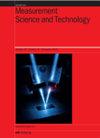High-precision point cloud registration method based on volume image correlation
IF 3.4
3区 工程技术
Q1 ENGINEERING, MULTIDISCIPLINARY
引用次数: 0
Abstract
With the rapid development of binocular reconstruction, fringe projection profilometry, and time of flight (ToF), 3D imaging technology has been widely applied in the field of 3D measurement. However, due to limited measurement range and self-occlusion, point cloud registration methods are often used to obtain larger or more complete 3D contours. Although many scholars have proposed various point cloud registration methods, the accuracy and efficiency of point cloud registration still need to be further improved, especially for point clouds with different density or non-rigid transformation. Image registration technology based on image correlation has been developed for many years and has achieved great success in fields such as computer vision, photomechanics, and photogrammetry. Therefore, a simple and direct idea in this paper is to transform the point cloud registration problem into volume image correlation problem. By this, an efficient image registration method based on Fast Fourier transform and an inverse compositional Gaussian Newton (IC-GN) optimization method that only needs to calculate the Hessian matrix once can be introduced into the point cloud registration field, which can greatly improve the speed and accuracy of point cloud registration. Comparative experiments have shown that our method has doubled the accuracy and efficiency compared to the ICP method, and its practicality has also been verified in impeller reconstruction experiments.基于体图像相关性的高精度点云注册方法
随着双目重构、边缘投影轮廓仪和飞行时间(ToF)技术的快速发展,三维成像技术已广泛应用于三维测量领域。然而,由于测量范围有限和自闭性等原因,为了获得更大或更完整的三维轮廓,通常采用点云配准方法。虽然很多学者提出了各种点云配准方法,但点云配准的精度和效率仍有待进一步提高,尤其是对于密度不同或非刚性变换的点云。基于图像相关性的图像配准技术已经发展多年,并在计算机视觉、摄影机械和摄影测量等领域取得了巨大成功。因此,本文的一个简单直接的想法是将点云配准问题转化为体积图像相关问题。由此,一种基于快速傅里叶变换的高效图像配准方法和一种只需计算一次 Hessian 矩阵的逆合成高斯牛顿(IC-GN)优化方法就可以被引入点云配准领域,从而大大提高点云配准的速度和精度。对比实验表明,与 ICP 方法相比,我们的方法在精度和效率上都提高了一倍,其实用性也在叶轮重构实验中得到了验证。
本文章由计算机程序翻译,如有差异,请以英文原文为准。
求助全文
约1分钟内获得全文
求助全文
来源期刊

Measurement Science and Technology
工程技术-工程:综合
CiteScore
4.30
自引率
16.70%
发文量
656
审稿时长
4.9 months
期刊介绍:
Measurement Science and Technology publishes articles on new measurement techniques and associated instrumentation. Papers that describe experiments must represent an advance in measurement science or measurement technique rather than the application of established experimental technique. Bearing in mind the multidisciplinary nature of the journal, authors must provide an introduction to their work that makes clear the novelty, significance, broader relevance of their work in a measurement context and relevance to the readership of Measurement Science and Technology. All submitted articles should contain consideration of the uncertainty, precision and/or accuracy of the measurements presented.
Subject coverage includes the theory, practice and application of measurement in physics, chemistry, engineering and the environmental and life sciences from inception to commercial exploitation. Publications in the journal should emphasize the novelty of reported methods, characterize them and demonstrate their performance using examples or applications.
 求助内容:
求助内容: 应助结果提醒方式:
应助结果提醒方式:


